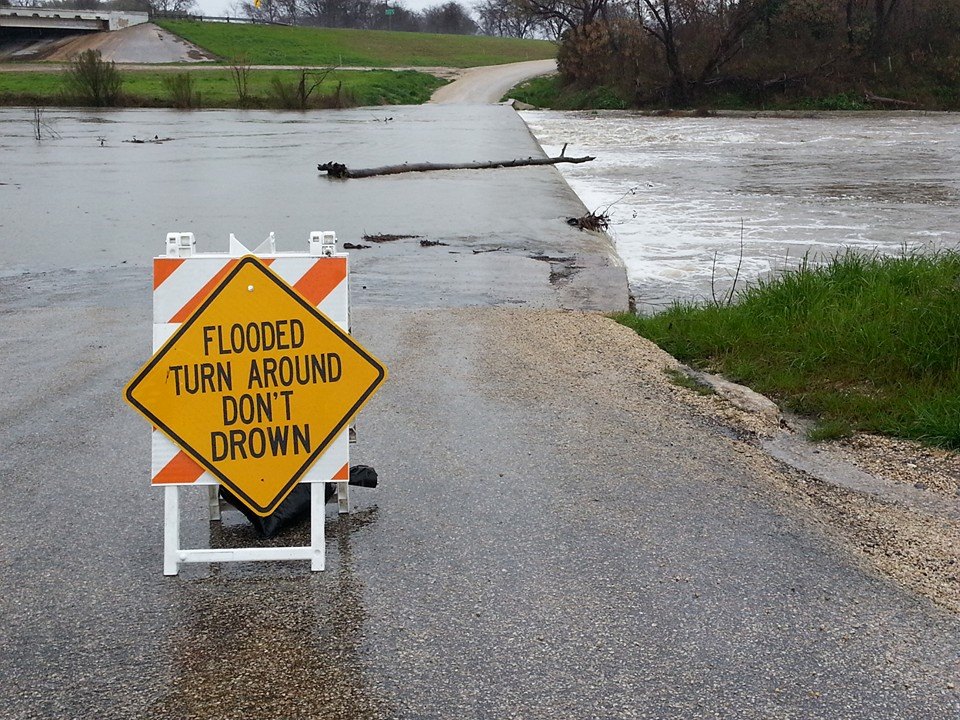
Longhorn in Central Texas - Texas Landowners Association
10 Things you need to know, before buying land!
In this post I’ve outlined 10 things you absolutely need to know about a property before purchasing it.
Investing in real estate is a thrill like no other. For most of us purchasing property represents the pinnacle of a lifetime of hard work. It is most likely the biggest investment you will ever make. For this reason it is important to do your homework and make sure you’re investing wisely. There are a myriad of ecological factors and legalities that can have you second guessing your decision after the fact.
Once you’ve decided you are going to purchase property the first step is to outline your personal goals for a potential property, as well as any specific criteria. It sounds cheesy, especially since you already “know” what you want; however, not doing this will be your first mistake. Your goals may include managing for white-tail, grazing cattle, passively enjoying songbirds, hunting waterfowl, but will more than likely include some combination of goals.
Once you know what you expect out of a piece of property you should find a tract of land that will fulfill those expectations. As a land agent and a biologist, I have had to break the news to more than a few people that their property could not produce the wildlife they were expecting; or there is was no suitable place for a lake; or even though there is grass, very little of it is palatable enough for cattle.
After you get familiar with these items, be sure to check out my compressive article on How to Buy Land in Texas, where I cover each step of the purchasing process in detail and load you full of free resources!
10 things to know about a property before you buy
(1.) Tax Valuation
Is there currently an agricultural appraisal for the property? If so what is the agricultural valuation based on? This is huge! With an agricultural appraisal taxes are based on the agricultural productivity value of the land rather than the market value. This is called an agricultural valuation.
If a property is valued at $500,000 and there is a 2% tax rate you’ll be paying $10,000/year. This property may only have the ability to produce $20,000 worth of livestock, hay, or timber. With an agricultural valuation, this property would be taxed at the same rate (2%) but would pay this on its agricultural productivity ($20,000 x 2% = $400). Here’s a link to another article we have on this topic.
In Texas, landowners are able to convert from a typical open space valuation (ie. Livestock or hay production) to a wildlife tax valuation. This allows you to maintain your “exemption” simply by managing for wildlife.
(2.) Flood Plains
This is perhaps the most overlooked area in the purchase of a property. Depending on what you expect out of your property they can be a good or a bad thing. You may have heard of the 10, 25, 50, and 100 year flood plains. Statistically a 100 year flood event should happen once every hundred years, the area the water covers in that event is the 100 year flood plain. To put it more simply though, there is a 1% chance that this size flood event will occur every year. Most insurance companies will not insure a structure that lies within this flood plain.
Flood plains, however, are usually more productive than upland sites due to higher soil moisture levels. Forested areas in flood plains often have communities of bottomland hardwoods which produce significant volumes of mast and browse for white-tailed deer. They may also provide wetland habitat to a myriad of wildlife species including waterfowl. It also means there is a persistent source of water nearby. So if wildlife management is a goal, flood plains can be very beneficial.
The positioning of flood plains on the property is another factor to take into consideration. Depending on the size of the watershed they are draining, they may flood for a couple of weeks at a time. This is an important point if they bisect your property or you have to drive through them to gain access to your property. Take a look at the this link to check if FEMA shows a flood plain on your proposed property.
(3.) Delinquent Taxes
Check with the local tax appraiser to see if there are delinquent taxes on the property. The rights of the tax office supersede all others, including lenders.
(4.) Accessibility
Getting to your property whenever you want is important.
There is no sense in making such a large investment if you can’t use it when you want to. First, notice the condition of the road leading up to the property. If it rained would you be able to drive your vehicle down it? It’s easy to take this for granted, and if you’re accessing your land directly from a state highway or interstate you’re probably in good shape. FM roads are much better but county roads are generally at higher risk of flooding since there are fewer requirements for constructing or maintaining them.

Notice the type of material the road is made out of. Some materials are very slick when wet or get soft if not compacted properly. Also notice if they run through a flood plain. Often county roads are built to sit outside of flood plains but not always. You may be flooded in or out for a couple of days or sometime a week at a time. If there is any doubt, you may want to talk to neighbors or the county commissioner.
If you have to cross private property in order to gain access to your property make sure there is a deeded easement. If there’s not, be sure the purchase of the property is contingent upon receiving one from the landowner you must cross to access the property. I have seen people temporarily lose access to their property until an agreement was reached and I’ve seen one case that’s taken over a year to get access their property.
(5.) Proximity to train tracks, airports, & highways
Although convenient, living next to or nearby a highway can blur the sense of getting away from it all. Road noise can often travel .5-1.5 miles depending on how open the country is. Trains can generate noise that travels much farther, so note the proximity to train tracks as well.
(6.) Shape of property
This is often the most overlooked factor when it comes to purchasing a property. Most people prefer a high area to perimeter ratio. Meaning a shape more closely resembling a square is preferable. One reason a high ratio is beneficial is there are fewer feet of fence to maintain. It also reduces amount of boundary shared with neighbors, reducing possible dispute. If your heart is set on incorporating a more intense wildlife management program such as trophy whitetail production, you may want to take the shape of the property into account. It is more difficult to insure an equal allocation of resources (water, food, cover) on long skinny tracts or tracts that are awkwardly shaped. More perimeter also increases the risk of poaching.
(7.) Neighbors
Need a cup of sugar or borrow a tractor to move some hay a couple of times a year? They are either your best friends or your worst nightmare. Chances are you won’t know enough about neighbors by the time you purchase your property to make any large decisions. However, take note of how their property is kept (i.e. oil barrels, junk cars, feed lots, etc.) because chances are they won’t change just because you moved in. It is also advisable to visit with them about the perspective property and see what they may know.
(8.) Past Use (chemical plants, etc)
It’s fascinating to look how your property was historically used, many areas now covered in large forests in east/central Texas were once large cotton farms that were left fallow for decades. While previous agricultural use of your prospective property may not be something that matters much it’s certainly helpful to know whether or not there has ever been any kind of petroleum storage units on the property.
Previously when there was higher oil production in areas, oil & gas companies would stage large containers in areas to hold product before it was refined. Some containers became decrepit to the point of leaking before they were finally removed.There is a way to find out if your property has ever had an oil or gas well. It’s easy to know if there is still a pad, pumpjack, Christmas tree, or storage tanks but some of these locations have been fully removed and the wells capped long ago. Here’s how you find out: go to the Texas Rail Road Commission Website. This GIS viewer will allow you to zoom directly to your property and identify current and abandoned wells, pipelines, surveys, and much more.
To learn more about the pipelines on a piece of property, check out my article How to learn about the pipelines on your land?
Digitized soil surveys, county soil surveys were once the place that biologists and NRCS agents would start when beginning to look at managing a property. Not only do they include detailed deliniations of soil types across each county but they also note the previous uses of property in each county. It’s often an interesting read to understand the history of your local county this way. You can find them here
(9.) Mineral Rights
Mineral rights can be more valuable than the property itself in some cases. If minerals aren’t conveyed be sure to note whether or not the mineral estate owner has signed a surface waiver. If not, you have no legal ramification against surface mining or drilling. Mineral owners often maintain the right to build roads and pads where they need to on your property, without a surface waiver of some type you will have no little discretion on where they can go. The Texas A&M Real Estate center has a good publication on Mineral Rights.
(10.) Endangered Species
Contact your local Texas Parks and Wildlife biologist to see if any endangered species inhabit your area. Some endangered species indigenous to Texas include the Red Cockaded Woodpecker, Black Capped Vireo, Golden Cheeked Warbler, Houston Toad, and several species of salamander. In some instances, having an endangered species inhabiting your property can limit what you can legally do or at least the timing of clearing activities.
Bonus… Easements –
Although Mineral Rights are a type of easement there are many others that can the value of your property and how you use it. Other easements include: Highlines, Pipelines, Logging Roads, Oil/Gas Production Pads, Access Easements, and Conservation Easements are a few of the types of easements you’ll encounter while purchasing property. Each has its own effect on the property as some are more intrusive than others.See below are
If you found this article helpful please feel free to share with those who may also get value from it. Feel free to comment if there is something I’ve missed. Our goal at the Texas Landowners Association is to help you reach your personal goals for your property!
About the Author:
Michael Morrow is the founder of the Texas Landowner’s Association and a land agent in the state of Texas. He is dedicated to ensuring landowners have the resources, information, and platform they need to effectively accomplish their personal goals for their property. His undergraduate and graduate level studies at Texas A&M were focused around Rangeland Ecology and Wildlife Management. He’d love to help you with your next purchase or help take your property to market. You can reach him here by emailing Michael@LandAssociation.org
